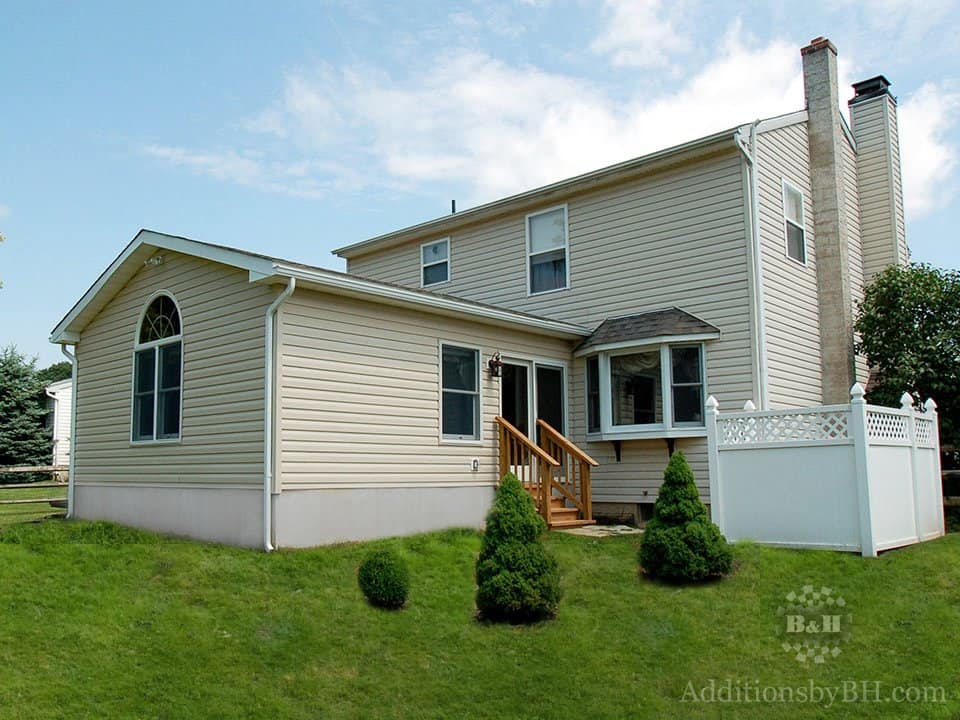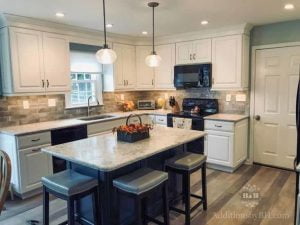Does your home need more square footage to accommodate your growing family? Are you anticipating adding an in-law suite for an aging loved one? Have you simply outgrown your current home but don’t want to move? If you are nodding your head yes while reading these questions, then our blog post on adding a home addition is just what you have been looking for.
A home addition can be a great solution to the needs mentioned above as well as a host of others. Besides being a great investment into your property, it also has the potential to add more living space, transform the look and feel of your home and increases your property value.
If you are considering a home expansion project, here are the top ten things you should consider before proceeding.
1. SETTING A CLEAR OBJECTIVE
While it’s easy to get excited about planning a home addition, be sure to take an account of the part of your home you are considering adding onto. Weigh this area of your home against your other options to flush out the best possible solution.
For example, you could add livable square footage by finishing a space that is currently unfinished, adding onto your home by building out a section of your home, enclosing a porch, or even building an additional floor on your home; to name a few.
Discuss your options with a qualified professional and be sure that the option that best suits your home design accomplishes the objective for adding onto your home was originally intended for.
2. DETERMINE YOUR PROPERTY LINES
Though home expansion is a part of your property, you should still always check your property survey for an accurate property boundary. This is a necessary measure because local codes likely impose a restriction on how near you can go to your neighbors’ house, the roadways or an adjacent vacant lot. These restrictions will likely become common knowledge when applying for the permit for your addition, but it is helpful to understand these restrictions prior to the permitting phase of your project.
3. CHECK LOCAL BUILDING CODES
No doubt, it’s your house and your money but you still need to comply with your local building regulations. Each locality carries with it different codes and these regulations may determine if you have the ability to build up or out with your home addition. The age of your home or the location may determine if you have added regulations placed upon your residence and it is recommended that you do a little bit of due diligence in this area before getting too committed to a home addition plan.
4. HIRE THE RIGHT CONTRACTOR
Now we have written an extensive blog article on this topic and encourage you to check that article out here: What makes a good home remodeler. When choosing a contractor for your project you should be able to easily answer the following questions. Have they done this type of project before? Hiring someone who doesn’t have documented experience in your project could be a red flag. Do they have the proper licenses, insurances, and references? Make sure they can produce the proper documentation and feedback from previous customers. Now lets briefly mention pricing and what to look for. The price a contractor quotes you should be compared to the value that price brings. It is the best value you are looking for, not the best “price”. Comparing bids from multiple contractors is a good practice but only makes sense when either showing you different approaches to the project or apples-to-apples comparisons.
5. SEAMLESS DESIGN
Once you are clear on the WHY of your home addition and believe that you will be able to operate within local codes to get what you want, then you can begin to explore your design options. The first thing that you should do is explore different designs with a design professional or establish what you like with a thorough online search. Be cautious in deviating too far from your current home design or décor. You want the additional space you are adding to feel as though it was always there. Even slight design flaws can lead to a feeling of an abrupt transition from the old to the new. As with the use of the space and having it meet your needs as a part of the project, so should you strive for a seamless transition in design.
6. PROJECT TIMELINE
A project timeline is very important, especially when you may be sacrificing home comfort by living in the home during construction. Before beginning your project, your contractor should present you with a project schedule that clearly lays out the intended time your project should take. If you are uncomfortable with this timeline for any reason, discuss this with your contractor. Some of your choices in design or fixtures may be contributing to the timeline and there may be potential to choose something different and shorten the project schedule. Construction is a time-consuming endeavor and you should expect an investment in time to be apart of this type of project. Understanding your time commitment upfront is your best chance of setting realistic expectations for you and your family.
7. PROTECTING YOUR EXISTING HOME ELEMENTS
Constructing a new space to your home can have varying levels of complexity. The chosen approach to constructing your home addition will also have varying effects on your current household items. It is good practice, regardless of the steps taken to protect your home itself, to remove any highly valuable or irreplaceable items and place them in a location that will not be receiving construction traffic throughout the project. Before the project begins, walk through your home with your contractor and discuss what should be removed or put away prior to construction beginning.
8. ESTIMATE YOUR BUDGET
Knowing how much you’re willing to spend on a home addition is a vital part of your pre-planning. Many contractors will ask you right out of the gate what your budget is. This is mainly because they will have a good idea of whether your home addition aspirations are realistic and coincide with your budget. If they do then great you can continue to have the conversation about your current desires but if they don’t then it is an opportunity to discuss what is a realistic expectation. This can generally be expressed in a price per square foot cost. When you understand what this average cost is for your area compared to your current budget, then you will have a good idea of what you are working with.
9. LIVE IN OR MOVE OUT
Construction can generally be performed with you living in the home much of the time. However, this does carry some level of inconvenience for both you and the contractor. The important thing is to know what you’re getting into by living in the home during construction and if your comfortable with those circumstances. Discuss with your contractor what these circumstances may be and decided if/when/how long you are willing to live with them.
10. POST CONSTRUCTION
Once the project is complete, you will have the ability to explore your completed space. As exciting as that day will be, you will want to do some final closeout items with your contractor prior to signing off on the project. The final part of the construction process is a simple but important step and includes a walkthrough between you and your contractor. This walkthrough gives you both the ability to point out any outstanding items and discuss how they may be addressed. Once both parties are on the same page and satisfied, you can close out the project and begin to live and enjoy your new space!
CONCLUSION
Adding a home addition can be an exciting time for any homeowner and we hope this list helps you get through your project successfully. These topics are merely an introduction to begin considering each element that goes into a remodeling project such as this one. Please let us know what you think of this article and how it has helped you with your project. Lastly, research your topic thoroughly and take your time to make the best decision for your situation. If you are looking for a remodeler who specializes in home additions within Montgomery County or Bucks County Pennsylvania, you can reach out to us here at Additions by B&H located in Chalfont, PA. We are BBB accredited since 2014, and the company enjoys an A+ rating. Additionally, B&H has passed the screening process and is approved by HomeAdvisor for their high-quality of service over the past five-plus years. Additions by B&H has been completing home improvement projects for the last 38 years and is well established in the local community. Their online reviews speak for themselves and we encourage you to review them here. Good luck with your next project!
– Additions By B&H






